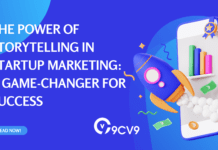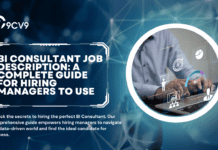Key Takeaways
- Competitive Intelligence Software collects and analyzes competitor and market data to support strategic decision-making.
- It offers features like real-time monitoring, automated insights, and cross-departmental collaboration tools.
- Businesses using CI software gain a sustainable competitive advantage through faster, smarter market responses.
In today’s hyper-competitive digital economy, businesses can no longer afford to operate based on assumptions or outdated information.
As market landscapes shift rapidly due to technological advances, globalization, and evolving consumer expectations, organizations must adopt smarter, more data-driven strategies to maintain their competitive edge.
One of the most powerful tools enabling this transformation is competitive intelligence software—a sophisticated solution designed to gather, analyze, and interpret data about market rivals, industry trends, and emerging opportunities.

Competitive intelligence (CI) is the systematic process of collecting and analyzing information about competitors, customers, and market dynamics to support strategic business decisions.
While this concept has existed for decades, the rise of digital platforms and the explosion of publicly available data have fundamentally redefined how competitive intelligence is executed.
Manual data gathering and fragmented spreadsheets have given way to automated, AI-powered platforms that deliver real-time insights directly into decision-makers’ hands.
This evolution has given birth to a new category of tools—competitive intelligence software—that not only streamlines the CI process but also enhances its depth, speed, and accuracy.
Businesses across industries are increasingly leveraging competitive intelligence software to unlock valuable insights from competitor websites, social media activities, online reviews, industry reports, job postings, and much more.
These tools allow companies to monitor rivals’ product launches, marketing strategies, pricing changes, customer sentiment, and overall market positioning—often in real-time.
This enables decision-makers to anticipate market shifts, identify potential threats, discover untapped opportunities, and fine-tune their strategic direction accordingly.
Moreover, the utility of competitive intelligence software extends far beyond the executive boardroom. From product development and sales enablement to marketing strategy and customer experience enhancement, the insights generated by CI tools empower teams across the organization to operate with greater clarity and agility. Whether it’s optimizing go-to-market strategies, refining messaging to outshine competitors, or identifying gaps in a competitor’s offerings, the intelligence gathered plays a critical role in securing long-term market success.
As we delve deeper into this article, we’ll explore what competitive intelligence software truly entails, examine its core features and functionalities, and unpack how it actually works in practice. We’ll also highlight its strategic benefits, real-world applications, and the key considerations businesses should weigh when choosing the right solution. Whether you’re a startup looking to carve out market share or an established enterprise seeking to protect and expand your positioning, understanding how competitive intelligence software works is essential for navigating today’s dynamic and data-driven business environment.
Before we venture further into this article, we would like to share who we are and what we do.
About 9cv9
9cv9 is a business tech startup based in Singapore and Asia, with a strong presence all over the world.
With over nine years of startup and business experience, and being highly involved in connecting with thousands of companies and startups, the 9cv9 team has listed some important learning points in this overview of What is Competitive Intelligence Software and How It Works.
If your company needs recruitment and headhunting services to hire top-quality employees, you can use 9cv9 headhunting and recruitment services to hire top talents and candidates. Find out more here, or send over an email to [email protected].
Or just post 1 free job posting here at 9cv9 Hiring Portal in under 10 minutes.
What is Competitive Intelligence Software and How It Works
- What is Competitive Intelligence Software and How It Works
- What is Competitive Intelligence Software?
- Key Features of Competitive Intelligence Software
- How Does Competitive Intelligence Software Work?
- Benefits of Using Competitive Intelligence Software
- Key Considerations When Choosing a CI Tool
1. What is Competitive Intelligence?
Competitive Intelligence (CI) is a strategic process of gathering, analyzing, and applying information about competitors, industry trends, market dynamics, and consumer behavior to support better business decisions. It plays a vital role in helping companies remain agile, proactive, and well-informed in an increasingly saturated and dynamic marketplace.
This section will explore the definition of competitive intelligence, its key objectives, strategic importance, and practical examples of how it is used across various industries. Where applicable, tables and matrices are included to better illustrate CI’s components and applications.
Definition of Competitive Intelligence
- Competitive Intelligence (CI) refers to:
- The ethical collection and analysis of publicly available data about competitors and market trends.
- A proactive approach to monitoring the external business environment.
- A strategic tool for identifying threats, opportunities, and blind spots.
- CI is not corporate espionage:
- It is built on legal, open-source information.
- Examples include competitor websites, product brochures, customer reviews, press releases, regulatory filings, job boards, and industry reports.
Objectives of Competitive Intelligence
- Support Strategic Planning
- Identify long-term market opportunities and risks.
- Inform mergers, acquisitions, and investments.
- Enhance Market Positioning
- Uncover gaps in the market that your business can fill.
- Monitor how competitors are positioning their products and services.
- Drive Innovation
- Track technological advancements and product evolution.
- Understand competitor R&D and innovation pipelines.
- Boost Sales and Marketing Performance
- Equip sales teams with battle cards and objection-handling material.
- Fine-tune messaging based on competitor analysis.
Types of Competitive Intelligence
| Type | Description | Example Sources |
|---|---|---|
| Strategic Intelligence | Long-term trends, market shifts, economic changes | Industry reports, market forecasts, patents |
| Tactical Intelligence | Day-to-day competitor actions, short-term strategies | Social media, pricing updates, press releases |
| Product Intelligence | Insights into competitor products, features, quality | User reviews, product demo videos, changelogs |
| Sales Intelligence | Competitive positioning in sales contexts | Sales battle cards, CRM data, sales calls |
| Customer Intelligence | Analysis of customer feedback on competitors | Review platforms, surveys, complaint boards |
Examples of Competitive Intelligence in Practice
- Technology Sector Example:
- A SaaS company tracks feature updates from competitors like Salesforce and HubSpot.
- Monitors G2 reviews to detect customer dissatisfaction with specific features.
- Uses this information to prioritize its own product roadmap.
- Retail Sector Example:
- A fashion retailer monitors Zara’s and H&M’s seasonal pricing and promotional strategies.
- Tracks social media engagement to understand trending styles.
- Adjusts inventory and marketing plans based on competitor behavior.
- Pharmaceutical Example:
- A pharma firm observes competitors’ clinical trial filings and FDA submissions.
- Uses patent databases to track R&D efforts in the oncology space.
- Plans its drug pipeline accordingly to stay ahead of market releases.
Competitive Intelligence Sources
| Category | Sources of Information |
|---|---|
| Public Digital Data | Competitor websites, blogs, social media profiles, online ads |
| Customer Insights | Online reviews, feedback forums, support tickets |
| Market Reports | Gartner, Forrester, IBISWorld, Statista |
| Government Data | Regulatory filings, public records, patent databases |
| Internal Sources | Sales teams, customer service reps, partner feedback |
Competitive Intelligence vs. Market Research
| Aspect | Competitive Intelligence | Market Research |
|---|---|---|
| Primary Focus | Competitors, market shifts, strategic threats | Consumers, product-market fit, preferences |
| Data Source | Publicly available competitor data, real-time monitoring | Surveys, focus groups, questionnaires |
| Objective | Proactive response to competition and market threats | Understand customer behavior and improve product/service fit |
| Nature of Insights | Strategic and tactical | Product-centric and consumer-focused |
| Use Case | Market entry, pricing strategy, product positioning | Marketing campaigns, feature updates, customer segmentation |
The CI Process: A Strategic Framework
Step-by-step competitive intelligence process:
- Planning & Direction
- Define goals: What questions do you want CI to answer?
- Choose focus areas: Competitors, trends, pricing, technology, etc.
- Data Collection
- Gather data ethically from open sources.
- Tools used: Google Alerts, SimilarWeb, Crayon, Klue, SEMrush.
- Analysis
- Interpret patterns and trends.
- Use SWOT or Porter’s Five Forces analysis.
- Dissemination
- Share insights via reports, dashboards, or internal presentations.
- Tailor information for different teams: executive, marketing, product, sales.
- Action
- Use insights to guide strategic decisions.
- Adjust marketing campaigns, pricing, product development, etc.
Example: SWOT Analysis of a Competitor Using CI
| Strengths | Weaknesses | |
|---|---|---|
| Opportunities | Expand into underserved markets | Improve customer service infrastructure |
| Threats | New entrants with aggressive pricing | Negative brand perception in key segments |
How CI is used:
- Strengths and weaknesses gathered via reviews, product analysis, pricing comparisons.
- Opportunities and threats identified by tracking market gaps and competitor expansion plans.
Conclusion of Section
Competitive intelligence is far more than competitor tracking—it is a strategic necessity in a modern business environment driven by digital transformation and data. Whether businesses aim to improve decision-making, innovate ahead of the curve, or mitigate risks, CI offers a structured, ethical, and insightful way to decode the market landscape. By leveraging powerful CI strategies and tools, organizations can ensure they not only survive but thrive in the face of fierce competition.
2. What is Competitive Intelligence Software?
Competitive Intelligence Software refers to a suite of digital tools and platforms designed to automate, enhance, and centralize the process of gathering, analyzing, and distributing competitive intelligence. It empowers businesses to track competitor activity, market trends, customer sentiment, and emerging opportunities in real-time, using data-driven insights to support strategic decision-making across departments.
This section delves into the meaning, core components, functionalities, and real-world applications of competitive intelligence software. Tables and matrices are included to illustrate key comparisons and capabilities.
Definition of Competitive Intelligence Software
- Competitive Intelligence Software enables:
- Automated tracking of competitor moves and market shifts.
- Aggregation of data from various public sources in a centralized dashboard.
- Real-time alerts on pricing changes, product updates, customer reviews, and press coverage.
- Purpose:
- To replace manual CI processes that are time-consuming and error-prone.
- To enable faster and more informed strategic actions by different teams (sales, marketing, product, strategy).
Core Features of Competitive Intelligence Software
| Feature | Functionality | Benefit |
|---|---|---|
| Competitor Monitoring | Tracks website changes, product launches, press releases, and executive moves | Real-time awareness of rival strategies |
| Content Intelligence | Analyzes content published by competitors (blogs, whitepapers, videos, etc.) | Understand messaging strategies and content gaps |
| Social Media Listening | Monitors brand mentions and sentiment across social platforms | Identifies PR trends and market perception shifts |
| Pricing Intelligence | Tracks competitor pricing models, promotions, and discounts | Informs pricing decisions and competitive positioning |
| Review and Feedback Analysis | Collects reviews from platforms like G2, Trustpilot, App Store | Highlights product weaknesses and customer pain points |
| Alerts & Notifications | Sends automated updates on competitor movements | Keeps stakeholders informed instantly |
| Reporting & Dashboards | Customizable visual dashboards for CI analysis | Makes insights accessible and actionable |
| Integration Capabilities | Connects with CRM, BI tools, and project management systems | Facilitates alignment across departments |
Types of Competitive Intelligence Software
| Type | Description | Example Tools |
|---|---|---|
| All-in-One CI Platforms | Comprehensive platforms for competitor tracking, content analysis, and alerts | Crayon, Klue, Contify |
| SEO & Digital Monitoring | Focused on web traffic, keyword tracking, and digital presence | SEMrush, SimilarWeb, Ahrefs |
| Pricing Intelligence | Tracks product pricing, bundles, and discounts | Price2Spy, Wiser, Minderest |
| Social Listening Tools | Monitors competitor social media and public sentiment | Brandwatch, Mention, Sprout Social |
| Review Aggregators | Collects and analyzes user feedback on competitors | SentiOne, ReviewTrackers |
Benefits of Using Competitive Intelligence Software
- Speed and Automation
- Automates data collection and reporting.
- Saves hours of manual research each week.
- Accuracy and Consistency
- Reduces human error and provides consistent data quality.
- Enables better benchmarking across time and competitors.
- Real-Time Decision Support
- Empowers executives and team leads with up-to-the-minute intelligence.
- Provides early warning for market threats or opportunities.
- Cross-Team Collaboration
- Equips product, sales, marketing, and strategy teams with tailored insights.
- Facilitates aligned go-to-market and pricing strategies.
Example Use Cases of Competitive Intelligence Software
- Marketing Department
- Uses Crayon to analyze competitor content strategy and adjust their own campaign messaging.
- Monitors ad creatives and A/B testing through SEMrush’s advertising insights tool.
- Sales Teams
- Access battle cards created from real-time competitor data using Klue.
- Leverages product comparison matrices to overcome objections during sales calls.
- Product Teams
- Tracks feature updates from rival SaaS platforms.
- Reviews customer feedback across platforms to prioritize feature improvements.
Competitive Intelligence Software vs. Manual Competitive Research
| Aspect | Manual CI Process | CI Software |
|---|---|---|
| Data Collection | Time-consuming and labor-intensive | Automated and continuous |
| Information Freshness | Often outdated by the time it is analyzed | Real-time and up-to-date |
| Accessibility | Scattered in documents or spreadsheets | Centralized in dashboards |
| Collaboration | Requires manual coordination across departments | Seamless sharing across teams |
| Reporting | Static reports that need manual updates | Dynamic, visual dashboards with auto-generated insights |
Key Metrics Tracked by CI Software
| Metric | Insight Gained |
|---|---|
| Competitor Website Traffic | Evaluates online performance and lead generation capability |
| Ad Spend and Strategy | Identifies paid search strategies and campaign focus |
| Social Engagement Metrics | Measures brand popularity and customer engagement |
| Pricing Changes | Monitors pricing tactics and potential revenue impact |
| Product Release Frequency | Determines innovation pace and time-to-market |
| Market Sentiment | Detects shifts in public perception and brand health |
Example: Competitor Feature Comparison Table Using CI Software
| Feature | Your Product | Competitor A | Competitor B |
|---|---|---|---|
| AI Integration | Yes | No | Yes |
| Free Trial | 14 days | None | 30 days |
| Custom Reporting | Yes | Yes | No |
| Price Per User/Month | $29 | $35 | $24 |
| Customer Support | 24/7 Chat | Email Only | Phone & Email |
Generated using platforms like Klue or Crayon
How CI Software Supports Strategic Decision-Making
- Scenario Planning
- Provides intelligence for modeling future market conditions and competitor actions.
- Market Entry Strategy
- Assesses regional competitor strength, pricing, and demand signals.
- Mergers and Acquisitions
- Offers insight into potential acquisition targets or emerging disruptors.
- Talent Acquisition
- Tracks hiring trends and organizational changes in competitor firms.
Top Challenges Addressed by Competitive Intelligence Software
| Business Challenge | How CI Software Helps |
|---|---|
| Inability to track competitor moves in real-time | Sends automated alerts on product changes, job postings, and news |
| Fragmented CI efforts across teams | Provides unified dashboards and collaboration tools |
| Lack of visibility into customer sentiment | Aggregates and analyzes online reviews and social media conversations |
| Delayed decision-making due to outdated data | Offers real-time, reliable data feeds |
Conclusion of Section
Competitive intelligence software transforms how businesses understand and respond to their external environment. By automating data collection, enhancing analysis capabilities, and offering real-time alerts, these tools make competitive strategy more accessible, scalable, and actionable. In an age where market dynamics shift daily, CI software is no longer a luxury but a critical asset for any organization striving for sustainable growth and competitive advantage.
3. Key Features of Competitive Intelligence Software
Competitive intelligence software is built with a variety of advanced features that streamline data collection, automate analysis, and deliver actionable insights across competitive landscapes. These features enable companies to monitor rivals, assess market dynamics, and empower teams with intelligence to support data-driven decisions. This section explores the essential features commonly found in leading CI software solutions, supplemented by real-world examples, comparative charts, and structured breakdowns.
1. Real-Time Competitor Monitoring
- Website and Content Tracking
- Monitors competitor website changes such as new landing pages, product updates, and blog posts.
- Captures metadata like keyword usage and content structure.
- Example Tools:
- Crayon offers automatic tracking of hundreds of digital touchpoints.
- Visualping detects visual or text-based changes on competitor websites.
- Benefits:
- Immediate awareness of new campaigns or product launches.
- Enables faster response strategies from marketing and product teams.
2. Automated Data Aggregation
- Cross-Platform Data Collection
- Pulls intelligence from news sources, social media, job boards, forums, and review platforms.
- Combines structured and unstructured data into a single dashboard.
- APIs and Integrations
- Seamless connection with CRMs (e.g., Salesforce), marketing tools (e.g., HubSpot), and data lakes.
- Advantages:
- Saves significant research time.
- Provides unified insights from fragmented digital sources.
3. Battlecard Creation and Management
- Dynamic Battlecards
- Live-updating sales enablement cards that compare your product with competitors.
- Include objections handling, strengths/weaknesses, and feature comparisons.
- Example Tools:
- Klue enables scalable battlecard creation for sales teams.
- Crayon provides integrations with Salesforce to embed battlecards in workflows.
- Key Use Case:
- Sales reps use battlecards during live calls to counter objections and position solutions effectively.
4. Custom Alerts & Notifications
- Event-Driven Triggers
- Real-time alerts based on competitor actions such as funding rounds, executive changes, pricing updates.
- Multi-Channel Delivery
- Alerts sent via email, Slack, Teams, or within the CI platform dashboard.
- Examples:
- Contify offers customizable alerts based on topic, company, industry, or geography.
- Crayon allows teams to set up Slack notifications for priority competitor movements.
- Strategic Benefit:
- Ensures teams act fast on external threats and opportunities.
5. Competitor Feature Comparison Matrix
A feature matrix is a visual tool to compare product capabilities across competitors.
| Feature | Your Product | Competitor A | Competitor B | Competitor C |
|---|---|---|---|---|
| Custom Dashboards | Yes | No | Yes | Yes |
| Social Media Monitoring | Yes | Yes | No | Yes |
| Battlecard Automation | Yes | Yes | No | No |
| CRM Integration | Salesforce, HubSpot | Salesforce only | None | HubSpot only |
| Multi-language Support | Yes | No | Yes | No |
Use Case: Created using CI tools like Klue or Crayon to help teams justify product positioning in pitch decks or internal discussions.
6. Social Media & Sentiment Monitoring
- Brand Sentiment Analysis
- Tracks tone and frequency of competitor mentions on social channels and forums.
- Uses natural language processing (NLP) to detect sentiment.
- Trend Identification
- Highlights viral topics, campaign feedback, and influencer endorsements.
- Example Tools:
- Brandwatch tracks social conversations across Facebook, Twitter, Instagram.
- Talkwalker offers image and video recognition to track logos in user-generated content.
- Benefits:
- Understand public perception of competitors.
- Identify gaps in customer satisfaction for strategic advantage.
7. Review and Customer Feedback Analysis
- Aggregate Competitor Reviews
- Pulls user feedback from G2, Capterra, App Store, Play Store, and Trustpilot.
- Sentiment and Topic Tagging
- Classifies reviews into themes such as pricing, UI/UX, support, integrations.
- Example Tools:
- SentiOne and ReviewTrackers enable deep product sentiment analysis by competitor.
- Benefits:
- Uncover customer pain points to capitalize on.
- Guide product roadmaps with real-world insights.
8. Visual Dashboards and Analytics
- Customizable Dashboards
- Teams can view KPIs, trends, and alerts in intuitive formats such as graphs and heatmaps.
- Exportable Reports
- Dashboards can be converted into PowerPoint decks, PDFs, or shareable links.
- Comparative Trend Charts:
Competitor Content Volume Over Time
| Month | Your Company | Competitor A | Competitor B |
|---|---|---|---|
| January | 24 blogs | 30 blogs | 18 blogs |
| February | 28 blogs | 32 blogs | 21 blogs |
| March | 31 blogs | 29 blogs | 25 blogs |
| April | 27 blogs | 35 blogs | 22 blogs |
Tool Example: Crayon allows exportable visual insights on competitor content strategies.
9. Pricing Intelligence and Promotion Tracking
- Pricing Updates
- Monitors competitor price changes in real-time.
- Includes promotional offers, discounting strategies, bundle options.
- Visual Pricing Grids:
| Product Tier | Your Price | Competitor A | Competitor B |
|---|---|---|---|
| Basic | $25/month | $29/month | $22/month |
| Pro | $49/month | $55/month | $50/month |
| Enterprise | Custom | Custom | $80/month |
- Tool Example: Wiser Solutions and Price2Spy provide automated retail pricing intelligence.
- Benefits:
- Supports revenue optimization and competitive repositioning.
10. Integration with Existing Tech Stack
- Supported Integrations
- CRM: Salesforce, HubSpot
- BI Tools: Tableau, Power BI
- Project Management: Jira, Trello, Asana
- Purpose:
- Align CI insights with existing workflows.
- Empower team leads with contextual intelligence without switching platforms.
- Example:
- Klue integrates battlecards directly within Salesforce and Slack.
11. Collaboration and Workflow Management
- Shared Intelligence Hub
- Central repository for CI insights, battlecards, and trend reports.
- Role-Based Access
- Allows marketing, sales, and leadership teams to access personalized insights.
- Internal Commenting
- Enables teams to annotate competitor profiles or alerts for internal discussion.
- Examples:
- Crayon and Klue offer collaborative annotation and cross-functional workflows.
12. Competitive Landscape Mapping
- Market Positioning Visualization
- Plots companies on grids based on price vs. value, innovation vs. adoption, etc.
- Competitor Classification Matrix:
| Competitor | Type | Position | Threat Level |
|---|---|---|---|
| Company A | Direct | Same product category | High |
| Company B | Indirect | Alternative solution | Medium |
| Company C | Emerging | Niche startup | Low |
Tool Example: Kompyte and Crayon support visual mapping of market threats.
Summary
The key features of competitive intelligence software collectively enhance a company’s ability to stay informed, anticipate competitor actions, and optimize internal strategies. From dynamic battlecards and real-time alerts to integrated dashboards and sentiment tracking, these capabilities equip modern organizations with a competitive edge in an increasingly fast-paced market. Selecting a platform with a robust suite of these features is essential for businesses aiming to remain proactive and strategically agile.
4. How Does Competitive Intelligence Software Work?
Competitive Intelligence (CI) software operates by automating the collection, organization, analysis, and distribution of actionable insights regarding market competitors and industry trends. These platforms are designed to help organizations monitor external developments in real time, detect competitor strategies, and provide relevant intelligence to stakeholders such as marketing, sales, product development, and executive teams. This section breaks down the core operational workflow of CI software into detailed sub-sections, supported by real-world examples, process diagrams, and functional matrices.
1. Data Collection and Aggregation
Purpose: To collect and consolidate raw data from diverse sources across the digital ecosystem.
- Multi-Channel Data Sources
- Public competitor websites (homepages, product pages, blogs)
- Social media platforms (LinkedIn, Twitter, Facebook, Reddit)
- News sites, press releases, RSS feeds
- Job postings on career pages and job boards
- Customer review sites (G2, Trustpilot, Capterra)
- Financial databases and SEC filings
- Automated Crawlers and APIs
- Bots and web crawlers extract HTML/text content at regular intervals.
- APIs integrate structured data from external tools like Salesforce, Google News, or Glassdoor.
- Example Tools:
- Crayon and Klue use AI-driven crawlers to aggregate competitor activity.
- Contify offers industry-specific feed customization via APIs.
2. Data Structuring and Classification
Purpose: To transform unstructured data into actionable, categorized intelligence.
- Tagging and Classification
- NLP (Natural Language Processing) models tag and classify data into themes such as:
- Product launches
- Marketing campaigns
- Pricing changes
- Hiring trends
- Executive moves
- NLP (Natural Language Processing) models tag and classify data into themes such as:
- Use of AI and Machine Learning
- Pattern recognition identifies recurring competitive actions.
- Sentiment analysis evaluates tone of competitor news, reviews, or social content.
- Intelligence Taxonomy Table:
| Category | Example Event | CI Tag |
|---|---|---|
| Product Update | “New AI feature launched” | Product Development |
| Executive Change | “Hired new CMO from Google” | Leadership Movement |
| Funding News | “Raised $20M in Series B funding” | Financial Update |
| Job Posting | “Hiring 5 data scientists in Berlin” | Expansion Strategy |
| G2 Review | “Customer says UI is confusing” | Customer Feedback |
3. Competitive Signal Detection
Purpose: To detect, prioritize, and highlight key competitor activities that represent opportunities or threats.
- Customizable Triggers
- Users can define what constitutes a “competitive signal,” such as:
- Change in pricing
- Mention in high-authority publications
- Surge in hiring or traffic
- Strategic partnerships or M&A activity
- Users can define what constitutes a “competitive signal,” such as:
- Scoring System
- Signals are scored based on:
- Urgency
- Business impact
- Department relevance
- Signals are scored based on:
- Example:
- Kompyte assigns scores from 1–100 to each event, indicating priority for different business units.
- Competitive Signal Chart Example:
| Signal | Impact Score | Relevant Team |
|---|---|---|
| New product feature released | 90 | Product, Marketing |
| Discount campaign launched | 80 | Sales, Finance |
| CEO resignation | 70 | Executive, HR |
| New office in Singapore | 65 | Strategy, Sales |
4. Intelligence Distribution and Workflow Automation
Purpose: To disseminate processed intelligence to the right stakeholders at the right time.
- Cross-Departmental Dashboards
- Customizable views for:
- Sales enablement (battlecards, win/loss analysis)
- Marketing trend reports
- Executive summaries and alerts
- Customizable views for:
- Multi-Channel Alerts
- Push notifications via:
- Slack
- Microsoft Teams
- Email digests
- Embedded CRM notifications (e.g., Salesforce, HubSpot)
- Push notifications via:
- Workflow Automation Features
- Scheduled reporting (e.g., weekly competitor digest)
- Trigger-based task assignments (e.g., launch a counter-campaign)
- Example Tools:
- Crayon and Klue integrate with Slack and Salesforce to deliver real-time intelligence to teams.
5. Visualization and Reporting
Purpose: To provide intuitive analytics and visual summaries that inform strategic decisions.
- Visualization Types
- Line charts for trend analysis
- Bar graphs for competitor content frequency
- Heatmaps for engagement metrics
- SWOT matrices for strategic overviews
- Example Visualization: Competitor Activity Over 6 Months
| Month | Your Firm | Competitor A | Competitor B |
|---|---|---|---|
| January | 10 Signals | 14 Signals | 12 Signals |
| February | 12 Signals | 18 Signals | 15 Signals |
| March | 16 Signals | 22 Signals | 17 Signals |
| April | 14 Signals | 24 Signals | 19 Signals |
- Example SWOT Matrix Generated by CI Tool:
| Strengths | Weaknesses |
|---|---|
| Faster product release cycle | Limited presence in APAC |
| Higher customer retention | Fewer integrations |
| Opportunities | Threats |
|---|---|
| Competitor facing negative reviews | Rival expanding globally |
| New regulations in our favor | Price war from low-cost players |
Tool Example: Kompyte allows export of automated SWOT matrices for strategic team meetings.
6. Sales Enablement Integration
Purpose: To equip sales teams with competitor-specific insights that improve conversion rates.
- Dynamic Battlecards
- Automatically updated with recent competitor wins/losses, objection handling, feature gaps.
- CRM Embedding
- Battlecards and competitor profiles embedded within Salesforce or HubSpot.
- Example Tools:
- Klue embeds dynamic battlecards directly into sales platforms with usage tracking.
- Sales Enablement Use Case Table:
| Scenario | CI Software Action |
|---|---|
| Competitor reduces pricing | Updates battlecard with objection handling script |
| New G2 review highlights weakness | Flags review in CRM notes for next sales call |
| Marketing launch announcement | Notifies SDRs to update prospect messaging |
7. Feedback Loop and Continuous Improvement
Purpose: To ensure CI strategies evolve through internal feedback and learning loops.
- Usage Analytics
- Tracks which CI insights or battlecards are most used by sales, product, or exec teams.
- Feedback Collection
- Allows users to rate usefulness, leave comments, and suggest new tracking areas.
- Machine Learning Refinement
- The system becomes more accurate over time by learning:
- Which alerts are high-value
- Which sources are most insightful
- Which teams engage most
- The system becomes more accurate over time by learning:
- Example:
- Crayon uses engagement scores to suggest more relevant competitor insights for specific teams.
Summary Workflow Chart: How CI Software Works
[Data Sources]
|
v
[Automated Data Collection]
|
v
[Tagging, Classification, and NLP]
|
v
[Competitive Signal Detection]
|
v
[Scoring + Intelligence Prioritization]
|
v
[Delivery via Dashboards, Alerts, CRM]
|
v
[Visualization + Reporting Tools]
|
v
[Sales Enablement, Marketing, Exec Use]
|
v
[Feedback Loop + ML Optimization]
Conclusion
Competitive intelligence software functions as a sophisticated multi-layered system that automates and enhances every stage of competitive tracking — from raw data harvesting to intelligence delivery and strategic enablement. Whether you’re a product manager seeking market validation, a marketer tracking brand sentiment, or a sales leader battling for conversions, CI platforms ensure you stay one step ahead in a dynamic competitive landscape. Choosing software that aligns with your specific workflow and intelligence goals is critical for long-term competitive success.
5. Benefits of Using Competitive Intelligence Software
Competitive Intelligence (CI) software provides a powerful and systematic approach for organizations to understand their market landscape, anticipate competitor moves, and make proactive strategic decisions. By leveraging automation, real-time data feeds, and AI-powered analysis, CI software delivers actionable insights that fuel growth, innovation, and market leadership. This section explores the wide-ranging benefits of using competitive intelligence tools, broken down into detailed sub-sections with real-world examples, supporting data, and illustrative matrices.
1. Enhanced Strategic Decision-Making
Purpose: Empower leaders and teams to make informed, data-backed decisions.
- Data-Driven Market Understanding
- Provides comprehensive insights into competitor strategies, market trends, and industry shifts.
- Helps validate assumptions and eliminate guesswork in planning.
- Example:
- A SaaS company uses Crayon to monitor competitor funding announcements and adjusts its pricing model in response to market dynamics.
- Strategic Planning Matrix Example:
| Decision Area | CI Insight Provided | Action Taken |
|---|---|---|
| Market Entry Strategy | Competitor expanding in Asia-Pacific | Launched early pilot in Singapore |
| Product Roadmap Planning | Competitor adding AI feature to roadmap | Accelerated internal AI initiative |
| Pricing Strategy | Rival offering tiered discounts | Introduced limited-time price bundles |
2. Improved Sales Enablement
Purpose: Arm sales teams with real-time intelligence to improve close rates and objection handling.
- Dynamic Battlecards
- Real-time updates on competitor messaging, features, and pricing.
- Sales reps are better equipped to position offerings during calls.
- Real-Time Alerts
- Notifies sales when a competitor is mentioned by a prospect or launches a new campaign.
- Example:
- Klue integrates with Salesforce to show reps live updates on competitors during active deals.
- Sales Enablement Table Example:
| Competitor Action | CI Alert Triggered | Sales Response Enabled |
|---|---|---|
| Competitor adds live chat | Battlecard updated with comparison | Reps highlight superior user experience |
| Discounted annual plans | Pricing objection alert | Offer custom value-added bundle |
| New G2 negative reviews | Sentiment change alert | Address similar objections proactively |
3. Faster Response to Competitor Moves
Purpose: Enable organizations to respond quickly and effectively to competitive threats or opportunities.
- Real-Time Monitoring
- Tracks changes across competitors’ digital footprints including product updates, hiring patterns, and PR activity.
- Action-Oriented Alerts
- Sends department-specific notifications for immediate tactical decisions.
- Example:
- A fintech startup receives an alert about a competitor launching a new API, allowing it to prepare a targeted counter-campaign within 48 hours.
- Response Speed Chart:
| Without CI Software | With CI Software |
|---|---|
| Response Time: 1–2 weeks | Response Time: 1–2 days |
| Manual data tracking | Automated 24/7 monitoring |
| Risk of missed signals | High signal accuracy |
4. Better Product Development Insights
Purpose: Guide product strategy with market intelligence and competitor benchmarking.
- Product Comparison Grids
- Highlight gaps and opportunities by mapping feature sets across competitors.
- Innovation Tracking
- Spot emerging technologies or features from early-stage competitors.
- Example:
- A cybersecurity firm uses Kompyte to monitor rivals’ GitHub repositories for new product features.
- Product Comparison Matrix:
| Feature | Your Product | Competitor A | Competitor B |
|---|---|---|---|
| AI-Powered Automation | ✅ | ❌ | ✅ |
| Real-Time Alerts | ✅ | ✅ | ✅ |
| Self-Service Dashboard | ✅ | ❌ | ❌ |
| Integrations (Slack, CRM) | ✅ | ✅ | ✅ |
5. Strengthened Marketing Strategy
Purpose: Align marketing campaigns with competitive positioning and audience needs.
- Content Intelligence
- Analyze competitors’ blog posts, ad campaigns, and SEO rankings.
- Messaging Differentiation
- Refine brand messaging based on gaps in competitor communication.
- Example:
- A B2B SaaS company finds that a competitor’s content lacks case studies and launches a targeted campaign around customer success stories.
- Marketing Opportunity Matrix:
| Competitor Weakness | Marketing Opportunity |
|---|---|
| No pricing transparency | Launch “honest pricing” campaign |
| Generic value proposition | Introduce industry-specific messaging |
| Poor mobile UX | Promote mobile-first product features |
6. Increased Operational Efficiency
Purpose: Automate labor-intensive research tasks to free up internal resources.
- Automation Benefits
- Eliminates need for manual competitive tracking via spreadsheets or manual web searches.
- Centralized Intelligence
- Reduces information silos across teams by centralizing CI access.
- Example:
- An enterprise reduces 40+ hours/month in manual research by implementing Contify.
- Efficiency Gains Table:
| Task | Manual Effort (hrs/month) | With CI Software | Time Saved |
|---|---|---|---|
| Competitor Website Monitoring | 12 | 1 | 11 hours |
| News and PR Tracking | 10 | 1 | 9 hours |
| Feature Comparisons | 15 | 2 | 13 hours |
| Battlecard Updates | 5 | 0.5 | 4.5 hours |
7. Strengthened Risk Management
Purpose: Identify and mitigate market threats before they escalate.
- Crisis Monitoring
- Detect early warning signs such as layoffs, security breaches, or legal disputes.
- Market Trend Alerts
- Notify relevant teams about regulatory changes or new disruptive entrants.
- Example:
- A healthcare software provider receives alerts about competitors facing compliance issues, allowing them to reinforce messaging on HIPAA compliance.
- Risk Alert System Table:
| Risk Type | Example Alert | Action Plan |
|---|---|---|
| Financial Instability | Competitor lays off 20% of staff | Launch acquisition outreach |
| Compliance Violation | Fined for GDPR breach | Reinforce data protection in sales |
| Executive Turnover | CMO leaves abruptly | Target disoriented marketing segments |
8. Stronger Collaboration Across Departments
Purpose: Foster alignment and knowledge sharing among sales, marketing, product, and leadership.
- Shared Dashboards
- CI platforms provide access to shared intelligence dashboards tailored by team function.
- Cross-Team Insights
- Enables all departments to act on the same insights in a coordinated manner.
- Example:
- Marketing uses CI data for messaging, while product uses the same intel to improve UX; sales aligns pitch accordingly.
- Collaboration Table:
| Department | CI Application |
|---|---|
| Marketing | Messaging and campaign refinement |
| Sales | Competitor battlecards and pricing alerts |
| Product | Feature benchmarking and innovation tracking |
| Executives | Strategic reports and market expansion insights |
Summary: ROI and Competitive Advantage
| Benefit Category | Quantifiable Outcome |
|---|---|
| Faster Response Times | 60–80% reduction in reaction time to competitor moves |
| Sales Win Rates | Up to 15% increase when using live battlecards |
| Research Efficiency | 70% reduction in manual effort across teams |
| Product Innovation | 2x faster time-to-market with feature benchmarking |
Conclusion
The adoption of competitive intelligence software delivers far-reaching benefits across organizational layers—from strategic leadership to frontline sales. It transforms fragmented data into structured, actionable insights, increases agility, reduces risks, and sharpens competitive positioning. As market competition intensifies across every sector, investing in CI software is no longer optional but essential for sustaining a data-driven, proactive business strategy.
6. Key Considerations When Choosing a CI Tool
Selecting the right Competitive Intelligence (CI) software is a strategic decision that can significantly influence an organization’s ability to compete effectively. The best CI tools offer real-time data monitoring, user-friendly dashboards, actionable insights, and seamless integrations. However, not every platform suits every business need. Organizations must carefully assess multiple critical factors before making a decision.
This section provides a comprehensive overview of the key considerations to evaluate when choosing a CI tool. Each sub-section includes actionable pointers, relevant examples, and illustrative tables and charts where applicable.
1. Business Objectives and CI Goals Alignment
Purpose: Ensure the CI tool aligns with the organization’s strategic priorities and use cases.
- Define Core Objectives
- Understand if the goal is to support sales enablement, marketing strategy, product development, or executive planning.
- Identify if the company requires real-time alerts, deep competitor profiling, or high-level trend analysis.
- Align Features with Use Cases
- Some tools specialize in battlecard automation, others in content intelligence or investor insight.
- Example:
- A mid-sized SaaS firm aiming to boost sales conversion may prioritize tools like Klue or Crayon that excel in competitive battlecard delivery.
- Goal-Feature Alignment Table:
| Business Goal | Recommended CI Features | Tool Example |
|---|---|---|
| Sales Enablement | Real-time battlecards, CRM integration | Klue, Crayon |
| Marketing Strategy | Competitor content tracking, SEO analytics | Semrush, Kompyte |
| Product Development | Feature comparison dashboards, tech monitoring | Contify, Wide Narrow |
| Executive Strategy | Industry trends, market share reports | Digimind, Cipher |
2. Data Sources and Coverage
Purpose: Evaluate the breadth and reliability of the data sources the CI tool collects from.
- Diversity of Sources
- Social media, news sites, SEC filings, job boards, review sites (like G2, Capterra), patent databases.
- Real-Time vs. Historical Data
- Ensure the tool supports both for trend analysis and proactive alerts.
- Example:
- Crayon pulls from over 100 types of public and proprietary data sources, including marketing copy, pricing pages, and analyst briefings.
- Data Source Coverage Matrix:
| Data Type | Importance Level | Common Tools That Support |
|---|---|---|
| Social Media Mentions | High | Sprout Social, Crayon, Kompyte |
| Company Press Releases | High | Contify, Digimind, AlphaSense |
| Review Platforms | Medium | G2, Trustpilot integrations |
| Product Documentation | Medium | Klue, Crayon |
| Financial Reports | High (B2B/Finance) | AlphaSense, Cipher |
3. Ease of Use and Interface Design
Purpose: Confirm the platform is intuitive, customizable, and accessible for all user types.
- User-Friendly Dashboards
- Drag-and-drop widgets, custom reporting, visual graphs.
- Role-Based Interfaces
- Marketing, sales, product, and C-suite users should each get relevant insights tailored to their roles.
- Minimal Training Time
- Ideal tools require limited onboarding and allow for self-service use.
- Example:
- Kompyte offers AI-driven UX that automatically curates competitor comparisons and insights with minimal configuration.
- Usability Scoring Table:
| Tool | Ease of Use Score (1–10) | Customizable Dashboards | Role-Based Views |
|---|---|---|---|
| Crayon | 9 | Yes | Yes |
| Klue | 8 | Yes | Yes |
| Cipher | 6 | Limited | Yes |
| Digimind | 7 | Yes | Yes |
4. Integration Capabilities
Purpose: Ensure seamless compatibility with the organization’s existing tech stack.
- Popular Integrations
- CRM platforms (Salesforce, HubSpot)
- Marketing tools (Marketo, Mailchimp)
- Communication tools (Slack, Microsoft Teams)
- API Access
- Look for tools that offer open APIs for custom workflows.
- Example:
- Klue integrates with Salesforce and Slack to automatically push competitor updates to reps handling key accounts.
- Integration Matrix:
| CI Tool | CRM Integration | Slack/MS Teams | Marketing Tools | API Available |
|---|---|---|---|---|
| Klue | Salesforce, HubSpot | Yes | Limited | Yes |
| Crayon | Salesforce, HubSpot | Yes | Google Ads | Yes |
| Contify | Zoho CRM | Yes | Marketo | Yes |
| Digimind | Salesforce | Yes | Mailchimp | No |
5. Reporting, Alerts, and Visualization
Purpose: Evaluate the quality, automation, and customization of CI reporting and real-time alerts.
- Custom Alerts
- Set triggers for specific keywords, topics, or competitors.
- Visualization Options
- Graphs, charts, heat maps, word clouds, battlecards.
- Scheduled and On-Demand Reports
- Must support PDF, PPT, Excel exports for sharing with stakeholders.
- Example:
- AlphaSense provides daily executive briefings on market news and emerging threats with intelligent summaries.
- Report Feature Comparison Table:
| Feature | Klue | Crayon | Contify | AlphaSense |
|---|---|---|---|---|
| Real-Time Alerts | ✅ | ✅ | ✅ | ✅ |
| Custom Visual Dashboards | ✅ | ✅ | ✅ | ❌ |
| Automated PPT Exports | ✅ | ❌ | ✅ | ✅ |
| Executive Briefings | ❌ | ✅ | ✅ | ✅ |
6. Scalability and Customization
Purpose: Choose a tool that supports future growth and adapts to evolving intelligence needs.
- Scalability
- Supports growing teams, data volumes, and expanded competitive sets.
- Custom Modules
- Capability to build custom workflows, taxonomies, or industry-specific trackers.
- Example:
- Cipher supports custom CI taxonomies and industry frameworks tailored for large enterprises.
- Scalability Checklist:
| Scalability Factor | Important Questions |
|---|---|
| User Capacity | Does the tool scale to 100+ users? |
| Competitor Profiles Limit | Can it track 50+ competitors or brands? |
| Data Storage | Is there a cap on historical intelligence data? |
| Multi-Language Support | Does it support global CI efforts? |
7. Data Accuracy and AI Capabilities
Purpose: Ensure insights are reliable and intelligently filtered.
- Natural Language Processing (NLP)
- Identifies context, tone, and sentiment of competitor announcements.
- Deduplication and Relevancy
- Uses AI to eliminate redundant data and deliver high-signal alerts.
- Machine Learning
- Learns from user preferences to improve relevance over time.
- Example:
- Crayon uses ML to highlight the most critical changes in a competitor’s marketing strategy based on historical engagement.
- AI Features Comparison Table:
| Tool | NLP Support | Sentiment Analysis | ML-Based Alerts | Smart Deduplication |
|---|---|---|---|---|
| Crayon | Yes | Yes | Yes | Yes |
| Digimind | Yes | Yes | No | Yes |
| Cipher | No | No | Yes | Limited |
8. Pricing and Total Cost of Ownership
Purpose: Analyze the complete cost structure, including hidden fees and long-term ROI.
- License Models
- Subscription-based, user-based, enterprise licenses.
- Additional Costs
- Setup, training, support, integrations.
- Trial Availability
- Consider tools that offer free trials or proof-of-concept demos.
- Example:
- Kompyte provides a basic trial and then scales pricing based on competitor tracking needs.
- Pricing Comparison Chart (Illustrative Range):
| Tool | Starting Price/Month | User Limit | Setup Fee | Free Trial |
|---|---|---|---|---|
| Klue | $1,200+ | 5–20 | Optional | Yes |
| Crayon | $1,500+ | 10–50 | Yes | No |
| Kompyte | $900+ | 5–25 | Optional | Yes |
| Digimind | Custom Quote | Unlimited | Yes | Limited Access |
Conclusion: Strategic Checklist for Selecting the Right CI Tool
| Evaluation Category | Must-Have Criteria |
|---|---|
| Business Fit | Aligns with strategic objectives and departments |
| Data Sources | Covers all key intelligence channels |
| Usability | Intuitive UI and customizable dashboards |
| Integration | Seamless connection to existing systems |
| AI & Automation | Supports intelligent analysis and filtering |
| Reporting | Offers actionable, well-visualized insights |
| Scalability | Can grow with your organization’s needs |
| Pricing | Transparent and offers good ROI |
Conclusion
In today’s hyper-competitive and information-rich business landscape, Competitive Intelligence (CI) software has emerged as a mission-critical tool for organizations aiming to stay ahead of the curve. As markets become increasingly dynamic and customer expectations evolve rapidly, relying solely on instinct or fragmented data is no longer sufficient. Organizations need structured, scalable, and real-time intelligence solutions—and that’s precisely what CI software delivers.
Why Competitive Intelligence Software is Essential for Modern Enterprises
- Real-Time Market Awareness
Competitive Intelligence platforms provide continuous monitoring of competitors, market trends, customer sentiments, and emerging threats—enabling businesses to react swiftly to change. - Strategic Decision-Making
By transforming raw external data into structured insights, CI tools empower leadership teams with actionable intelligence that guides pricing strategies, product development, market entry, and M&A decisions. - Cross-Departmental Value
CI software supports multiple business functions including:- Sales – through real-time battlecards and objection handling materials
- Marketing – by tracking competitor content strategies and campaign effectiveness
- Product Teams – with insights into emerging features, pricing changes, and tech developments
- Executive Teams – via dashboards and intelligence briefings for high-level strategy formulation
- Sustainable Competitive Advantage
Businesses that implement CI tools gain a systematic, ongoing view of the competitive landscape, creating a long-term edge that’s difficult for slower-moving competitors to replicate.
How CI Software Transforms Competitive Monitoring
Unlike traditional manual research or scattered online tracking, CI software automates and centralizes the entire intelligence-gathering process. Here’s a recap of how it works:
| CI Software Function | Key Purpose |
|---|---|
| Data Aggregation | Gathers data from news outlets, websites, social media, filings |
| AI-Powered Analysis | Uses NLP and ML to extract, categorize, and prioritize insights |
| Custom Alerts & Dashboards | Sends timely updates to users via personalized dashboards |
| Strategic Reporting | Provides exportable reports, visual charts, and executive summaries |
| Integration & Collaboration | Embeds insights into tools like Slack, Salesforce, and CRMs |
This integrated approach allows businesses to monitor competitors proactively, rather than reactively responding to threats.
The Measurable Benefits of Adopting CI Software
Organizations that successfully implement CI tools typically realize measurable improvements across several KPIs, including:
- Increased Win Rates in competitive sales deals
- Faster Time to Market with competitive product enhancements
- Higher Campaign Effectiveness by identifying marketing white spaces
- Greater Market Share Awareness through real-time tracking of industry movements
Such tools also play a crucial role in risk mitigation, helping brands anticipate potential disruptions before they escalate into crises.
Choosing the Right CI Tool: A Strategic Imperative
However, realizing these benefits depends heavily on choosing the right platform. As detailed earlier in this guide, organizations must consider:
- Alignment with business objectives
- Data accuracy and source diversity
- AI capabilities and automation features
- Integration compatibility with current tech stacks
- Customization, scalability, and cost-effectiveness
From popular tools like Crayon, Klue, and Kompyte to enterprise-grade platforms like AlphaSense, Cipher, and Digimind, businesses must match their strategic needs with the tool’s feature offerings.
Final Thoughts
Competitive Intelligence software is not just another marketing or sales tool—it is a strategic enabler that connects dots across departments, markets, and data channels. As digital transformation accelerates, organizations equipped with robust CI capabilities will not only survive but thrive in disruption, making faster, smarter, and more confident decisions backed by verified insights.
Whether you’re a startup exploring new markets, a mid-sized company seeking sales enablement, or a global enterprise refining your positioning, investing in a CI platform can redefine your competitive trajectory. By embedding intelligence into everyday decision-making, organizations can confidently innovate, differentiate, and lead in their industries.
For forward-thinking businesses, Competitive Intelligence software is no longer optional—it is a strategic necessity.
If you find this article useful, why not share it with your hiring manager and C-level suite friends and also leave a nice comment below?
We, at the 9cv9 Research Team, strive to bring the latest and most meaningful data, guides, and statistics to your doorstep.
To get access to top-quality guides, click over to 9cv9 Blog.
People Also Ask
What is Competitive Intelligence Software?
Competitive Intelligence Software is a digital tool that collects, analyzes, and delivers insights on competitors, markets, and industry trends to help businesses make strategic decisions.
How does Competitive Intelligence Software work?
It aggregates data from various sources like news, websites, and social media, then uses AI and analytics to generate actionable insights for business strategies.
What are the benefits of using CI software?
It improves decision-making, enhances market awareness, boosts competitive positioning, and supports sales, marketing, and product development teams.
Who uses Competitive Intelligence Software?
Sales teams, marketers, product managers, executives, and analysts across industries use CI tools to monitor competitors and identify market opportunities.
What features should I look for in CI software?
Key features include real-time tracking, competitive dashboards, battlecards, customizable alerts, and integration with CRMs and collaboration platforms.
Can small businesses use CI software?
Yes, many CI tools offer scalable pricing and features suitable for startups and small businesses looking to understand and compete in their market.
Is Competitive Intelligence legal?
Yes, CI is legal as long as it relies on publicly available information and ethical data collection practices.
What types of data do CI tools collect?
They gather data from websites, press releases, job postings, social media, financial filings, customer reviews, and industry news.
Are there free Competitive Intelligence tools available?
Yes, basic versions of tools like Google Alerts, SimilarWeb, and SEMrush offer limited CI features at no cost.
How often is CI data updated in these tools?
Most CI software provides real-time or near real-time updates to ensure businesses have the latest intelligence for quick decision-making.
What industries benefit from CI software?
All industries benefit, including tech, retail, finance, healthcare, manufacturing, and B2B services.
How is CI software different from Business Intelligence software?
CI focuses on external data about competitors and markets, while BI focuses on internal company data like performance metrics and KPIs.
What is a battlecard in CI tools?
A battlecard is a quick-reference document with competitor insights used by sales teams to counter objections and win deals.
Can CI tools integrate with CRM platforms?
Yes, many CI tools integrate with platforms like Salesforce, HubSpot, and Microsoft Dynamics to streamline sales workflows.
Is CI software powered by AI?
Many modern CI tools use AI and machine learning for data processing, trend detection, and predictive analytics.
How does CI software support product development?
It helps identify competitor features, pricing models, customer feedback, and emerging tech trends to inform product strategies.
What are some top Competitive Intelligence software tools?
Popular tools include Crayon, Klue, Kompyte, AlphaSense, Digimind, and SimilarWeb.
Can CI software help in merger and acquisition strategies?
Yes, it can provide deep insights into potential acquisition targets, industry positioning, and competitive threats.
Is training required to use CI software?
Many tools are user-friendly, but onboarding support and training resources are often provided for better adoption and ROI.
How does CI software support marketing strategies?
It helps monitor competitor campaigns, SEO performance, and content strategies to refine your own marketing efforts.
What kind of reports can CI software generate?
They generate competitive dashboards, trend analyses, SWOT matrices, battlecards, and exportable reports for leadership teams.
Can CI software track global competitors?
Yes, most tools support global data tracking and offer multilingual capabilities to monitor international markets.
What’s the ROI of using CI software?
Companies typically see improved win rates, faster time-to-market, and better strategic alignment, resulting in high ROI.
Does CI software help with pricing strategies?
Yes, it tracks competitor pricing changes and promotions, helping businesses optimize their own pricing models.
How secure is the data in CI software?
Top vendors prioritize data security and compliance, offering encrypted storage and access controls to protect sensitive information.
Can CI software monitor social media platforms?
Yes, many tools include social listening features that track competitor activities and sentiment on platforms like Twitter, LinkedIn, and Facebook.
What is the difference between strategic and tactical CI?
Strategic CI informs long-term planning, while tactical CI supports day-to-day operations like sales and marketing.
How customizable are CI dashboards?
Most CI software platforms offer customizable dashboards to display relevant KPIs, alerts, and competitor insights tailored to user needs.
Is historical data available in CI software?
Yes, many tools provide access to historical competitor data and trends for benchmarking and long-term analysis.
How often should a company use CI tools?
Competitive Intelligence should be an ongoing activity, with daily or weekly monitoring depending on the industry and competitive landscape.































![Writing A Good CV [6 Tips To Improve Your CV] 6 Tips To Improve Your CV](https://blog.9cv9.com/wp-content/uploads/2020/06/2020-06-02-2-100x70.png)


